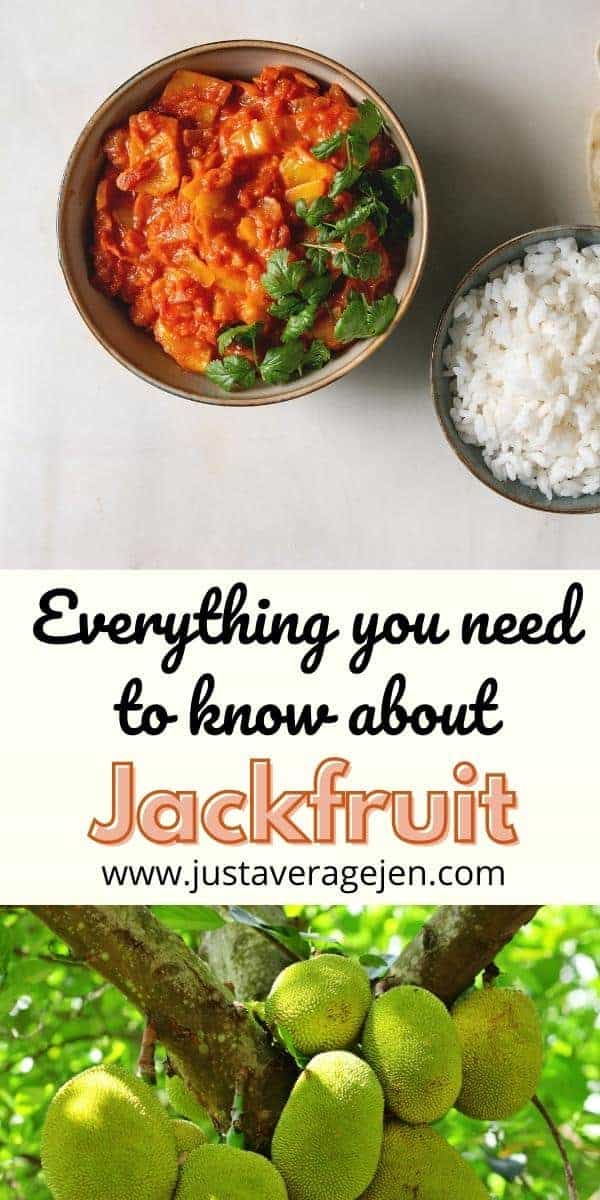What are jackfruit and all you need to know about cooking with it
Using jackfruit in western cooking seems to be becoming more and more popular lately. This is most likely because of it’s somewhat meaty texture and the rise in vegetarianism and veganism.
So what is it, where does it come from and why should you eat it?

What Is Jackfruit?
Although now widely cultivated across the tropical regions of the world, it’s origins lie in Southern India and the rain forests of Malaysia.
Jackfruits are large, fleshy fruits that grow on jack trees and are widely used in South and South-Eastern Asian cuisines. That being said, they can now be bought fresh and canned globally and are used by many in both sweet and savoury dishes.
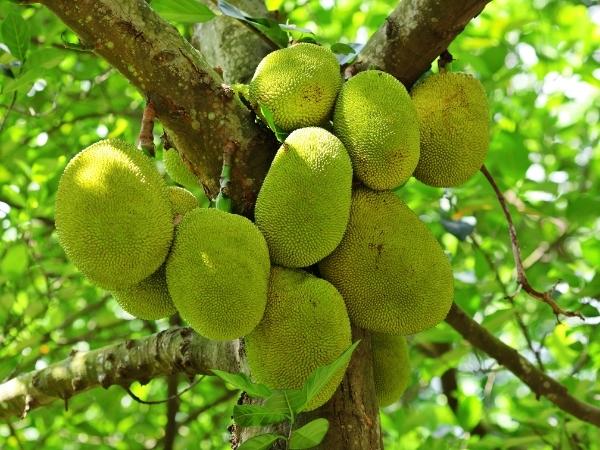
Jackfruit Appearance
Jackfruits are big! Some can weigh as much as 55kg and they are the biggest and heaviest fruit to grow on trees.
On the outside, it is green and bumpy, but once opened you’ll find a beautiful yellow flesh, similar to that of a mango.
Individual bulbs of flesh fill the inside of the jackfruit, and these are the parts that ultimately create that lovely ‘meaty’ texture.
The seeds of ripe jackfruit are edible and have a creamy taste similar to that of Brazil nuts. The seeds can be roasted (where they take on a similar taste to chestnuts), boiled or baked and eaten as healthy snacks.
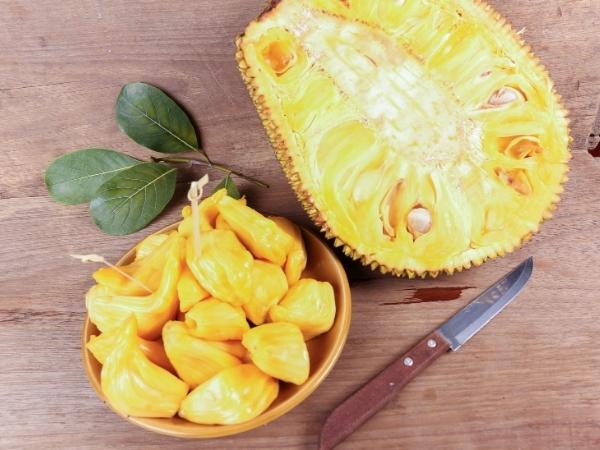
Jackfruit Texture
Canned jackfruit has a meat-like texture, which has led to its very appropriate nickname, the vegetable meat.
The unripe fruit has a stringy, more fibrous texture that many have compared to pulled pork.
Fresh ripe jackfruit has a texture similar to pineapple, but it is less juicy. Instead, the texture of ripe jackfruit is a bit waxy.
Jackfruit Flavour
Raw jackfruit has a sweet flavour, depending on the variety. Many describe the flavour as a fresh mix between pineapple and banana, making it great for custards and cakes.
Canned/unripe jackfruit has a far more mild taste and a meatier texture, which lends to its popularity in vegan/vegetarian savoury dishes.
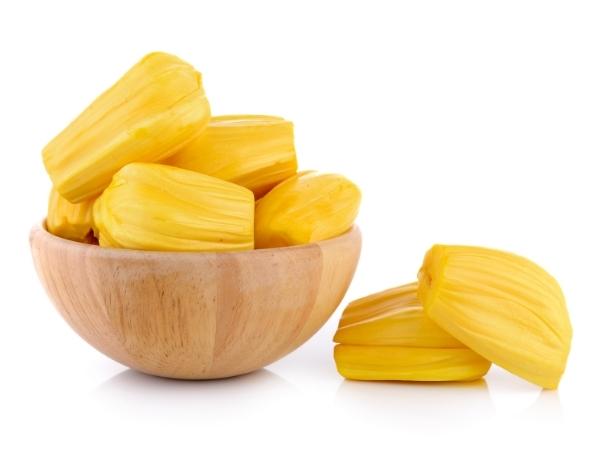
How To Prepare Jackfruit
Preparing Canned Jackfruit
In the UK, you’re unlikely to find an entire jackfruit that requires cutting and preparing.
Some specialist stores do stock whole jackfruit, although you’re more likely to find it canned in the tinned fruit section of the supermarket.
In this case, very little preparation is needed – drain the jackfruit and follow your recipe’s instructions.
However, if you do find yourself in possession of an intact jackfruit, you’re in for some fun.
Preparing Fresh Jackfruit
You’ll want to get a sharp knife and a large chopping board.
Tip: greasing up your knife with oil will help the latex sap within the fruit from sticking to your knife and making it more difficult to cut.
Instead of slicing through it like you would a melon, score around the diameter of the jackfruit and then break the two sides apart. This can be tricky as the flesh is strong, so you may need to use your knife.
Once you’re in, the bulbs can be removed – again, you may wish to use oil on your hands to help you remove the pods more easily and stop them from getting stuck together.
Once removed, they are ready to cook or they can be stored in an airtight container in the fridge for 3-4 days.
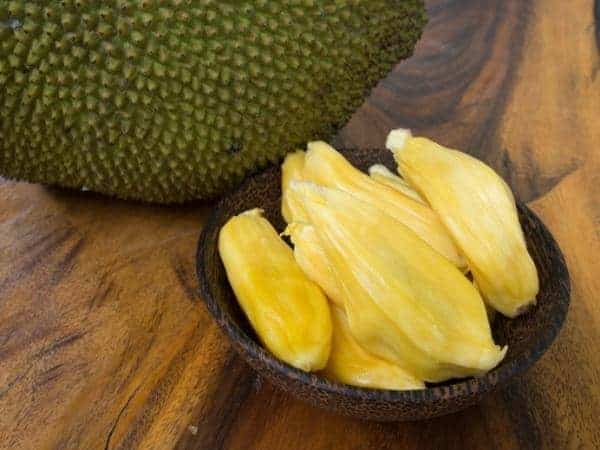
Cooking Techniques and Meal Ideas
How to make vegetarian or vegan pulled pork
The most popular recipe that it is used to make is the meat-free version of pulled pork.
Thanks to the fibrous texture, jackfruit makes an excellent meat substitute for recipes that require shredded meat. To prepare, all you need to do is shred the bulbs with a fork and marinade with bbq sauce and your favourite spices.
This vegetarian jackfruit ‘pulled pork’ is delicious served in a big wholemeal burger bun with a healthy salad or slaw on the side.
A great substitute for chunky meaty meals
The big, fleshy jackfruit bulbs make fantastic meat substitutes for meals that usually contain big chunks of meat.
Treat your jackfruit in the same way you would meat – ensure it’s well coated with seasonings and marinades so that the flavours can be absorbed into the heart of the flesh.
Use the bulbs this way for curries, stews, casseroles, pies and more.
Nutritional Info
Although jackfruit shares the same texture as meat, its protein content is significantly less.
Unlike meat substitutes that you can often buy in the frozen section of the supermarket, it has not been specifically formulated to provide the same protein intake as meat gives you.
Therefore it’s important to ensure you’re planning healthy, balanced vegetarian and vegan meals. It’s not all doom and gloom, though, as jackfruit still contains more than 3g of protein per cap – much more than the <1g of other fruits such as apples and mangoes.
Don’t let the protein content stop you from piling your plate high with delicious pulled jackfruit, though! What it lacks in protein, jackfruit makes up for in nutrients.
It actually contains some of almost every vitamin and mineral that you need to function, as well as providing a great source of fibre.
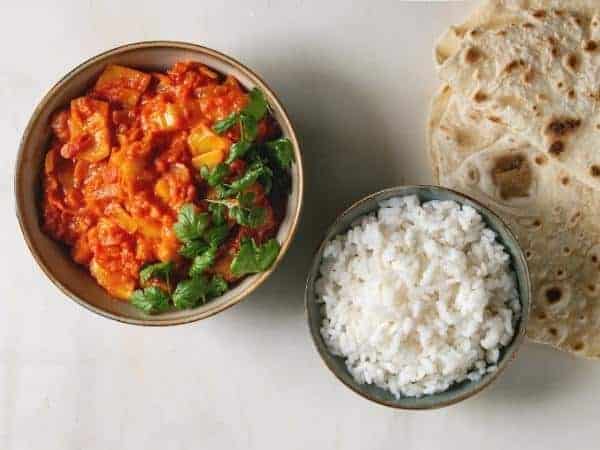
Why You Should Be Eating Jackfruit
It has become a popular ingredient among vegetarians and vegans, and it’s clear why. It is packed full of vitamins, minerals and antioxidants.
Additional studies have even suggested that jackfruit has several properties that may help manage blood sugar! The texture is great for replacing pulled meats in dishes such as pulled ‘pork’ and shredded ‘duck’; as well as chunkier meaty dishes like stews and curries.
This BBQ Pulled Jackfruit is a delicious recipe, an amazing alternative to pulled pork.
